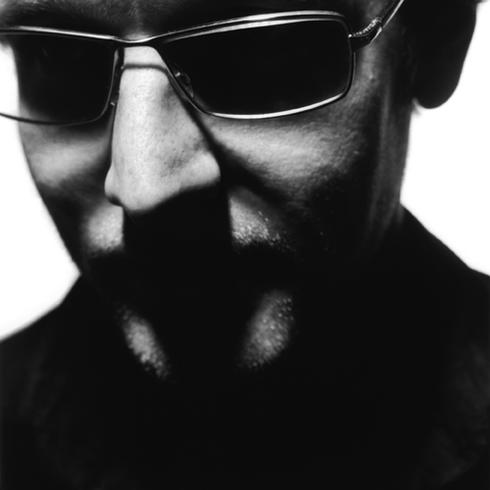
" Nummer Twaalf 2009 "
video
Guido van der Werve was born April 7th, 1977 in Papendrecht, the Netherlands.
As a child, he learned classical piano. After studying at the Conservatory of Rotterdam, where he studied industrial design, classical archeology and Russian, he enrolled at the Gerrit Rietveld Academy in the section "visual arts".
He wasin residence at the Rijksakademie Beeldende van Kunsten in 2006/2007, and with the International Studio & Curatorial Program (New York) in 2008. Nominated for the Dutch Prix de Rome in 2005,in 2008 he obtained a grant from the Foundation for Contemporary Arts in New York.
Guido van der Werve started off as a performing artist.However not wishing to do live performances he recorded them. In making these recordings he became interested in shooting film scenes and the cinema.
the performances form the core of his series of numbered movies, but Guido van der Werve kept adding recurring elements: music, text and background scenes. He worked from long descriptive plans and refused to seek professional actors. He has been writing his own soundtracks since 2007.Of musical training, he strives to give to his visual art creations the immediacy of music.
The works of Guido van der Werve have been widely exhibited in exhibitions as much monographic as collective, including the Tate Modern in London, De Appel Foundation in Amsterdam, Stedelijk Museum Bureau Amsterdam, the Museum De Hallen in Haarlem, the MoMa in New York, at the Centro Andaluz de Arte Contemporáneo in Seville, at the Galeria Vermelho in São Paulo, the National Centre of Contemporary Art in Moscow, the Museum Ludwig in Cologne, at the biennial Manifesta 7, the Turin Triennale 2008, at the Hayward Gallery in London, the Royal Academy in London, the Kunsthalle Basel and the Hirshhorn Museum in Washington.
Twaalf Nummer , 2009
Variations on a theme
king's gambit accepted
the number of stars in the sky
and why it is impossible to tune a piano.
Twaalf Nummer is a 45 minute cinematographic installation, a structured triptych based around a game of chess. Each panel of the triptych is a variation on the theme of the ephemeral as opposed to perpetual. For me the ever fleeting side of perpetual is melancholy.
Each scene has its starting point,an insoluble problem (or takes forever to solve) listed in a black and white field of piano keys, a chess game and the stars in the sky. The insolubility of the problem, and thus, its infinitude, is presented in contrast to the ephemeral nature of the environment in which the film takes place: in the first scene, old chess players,whose lives are nearing their end, in the second, the active volcano Mount Saint Helens, in the third, the active San Andreas fault.
Each component of the triptych is correlated with one phase of a chess game: opening, middle game and final. The game played during the film, which constitutes its foundation, is a new variant of the accepted King's gambit, specially elaborated for the work. To develop it, I worked throughout 2008 with the great master Leonid Youdassine. The first scene of this film is the opening of the game. In the other two scenes, the movement of parts are shown by their rating, which are shown in white in the lower right corner of the screen.
The soundtrack plays an important role in the film. This is an original creation for piano and strings that I made on the basis of the chess game described above. To do this, I designed a new instrument, the chess piano (see photo 1), a chessboard lined with a mechanical piano. The squares on the board sink like the keys of a piano, and trigger a mechanism for the hammer to knock the strings. This chess piano is granted based on its own chess notation, or the letters ABCDEFGA (not h) under the first row of the chessboard. These letters are the names of notes (the if, do, re, mi, fa, sol, la) in the English notation of the range of minor, and the piano istuned into this tonality. I spent over a year developing the chess piano .
The first part of the film (opening) refers to the number of the different possible chess moves, a number that is close to infinity (10 40 ). The scene is set at the Marshall Chess Club in New York (see photo 2), one of the oldest chess clubs in the United States, which counts among its illustrious members Marcel Duchamp and Bobby Fischer. As a prelude to this scene, a voiceover introduces the problem of calculating the number of possible chess moves and is filmed from a small black and white room.
The scene as such is the film's opening sequence and allows to present the chess piano . There you can see myself playing the first nine moves of the game against the grandmaster Leonid Youdassine, we are accompanied by nine string musicians and surrounded by twenty retired chess players. The scene is filmed in one shot in ten minutes.
The second part of the triptych (middle part) opens with a voice-over (still touring the same black and white space ) which questions how to count the stars in the sky. The scene takes place on Mount St. Helens (see photo 3) in the state of Washington. This is an active volcano which last erupted in 1980 and has left deep marks in the surrounding landscape: the vegetation is sparse and the ground is strewn with charred trunks, lying by the blast. In this sequence, I set up my own observatory, a personal construction for one person, beside the smoking crater of Mount St. Helens.
The last scene, or endgame, beginning after a voice-over (from the same room always black and white) explaining why it is impossible to fine-tune a piano, as music theory relies on a distorted base (because of the comma Pythagorean). In this scene, you see me in the middle of a deserted and rugged landscape dotted with rolling hills, pushing a car full of building materials to build a small house for a hermit (see photo 4). at a given location, I build this house and I enter, then we recognize the room where the voice was filmed. Once inside, I sit down, while the music and the chess game finish. The game ends in a stalemate, a notion that I explain briefly. The next shot is shot outdoors: the camera rises slowly (from a helicopter), to reveal the San Andreas fault (see photo 5).
This is an active fault at the junction of the Pacific and North American plate, which is responsible for most of the earthquakes in California and could cause a major earthquake (known as "the Big One") within forty years.
In chess, the pat symbolizes eternal balance, this is the relation to the temporary equilibrium of the collision of tectonic plates.
I started working on this project during summer 2007 and completed it in spring 2009.
Guido van der Werve

